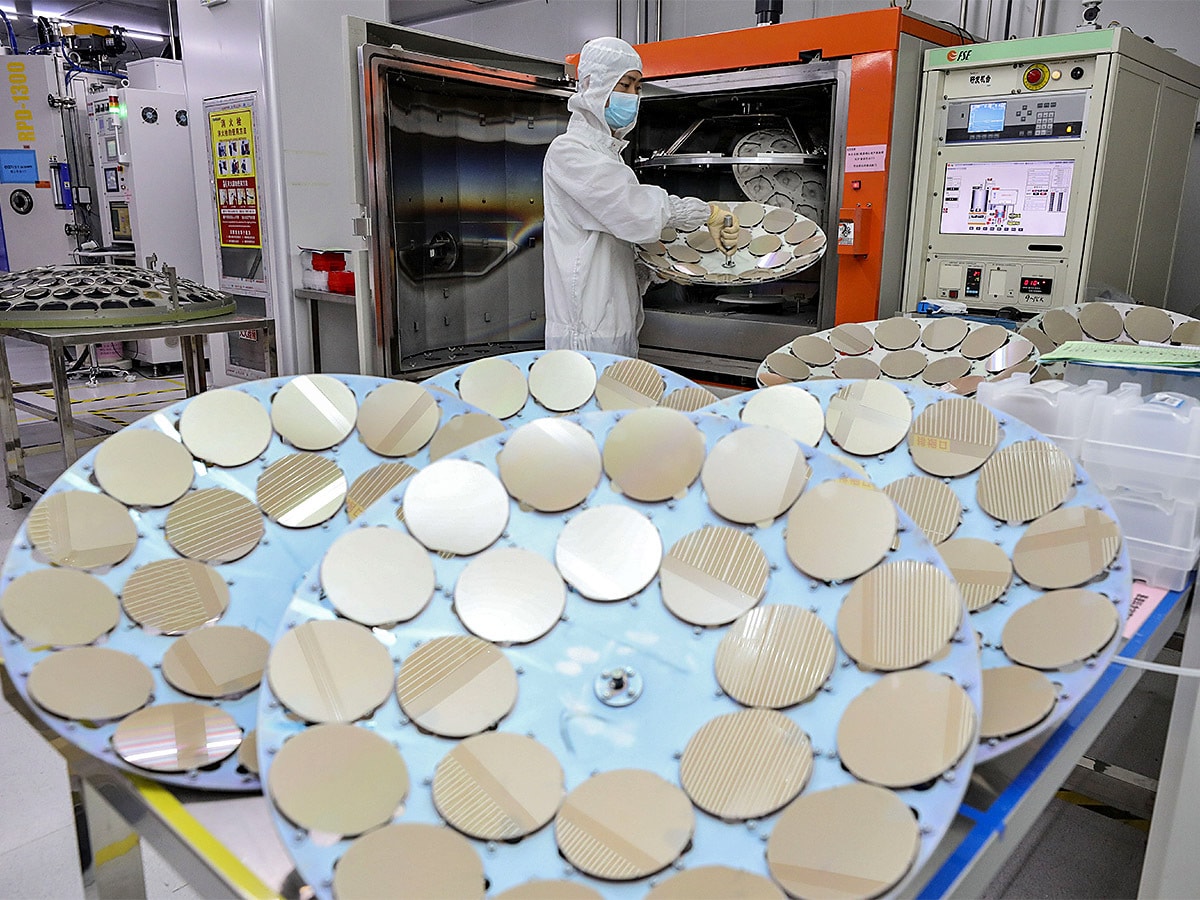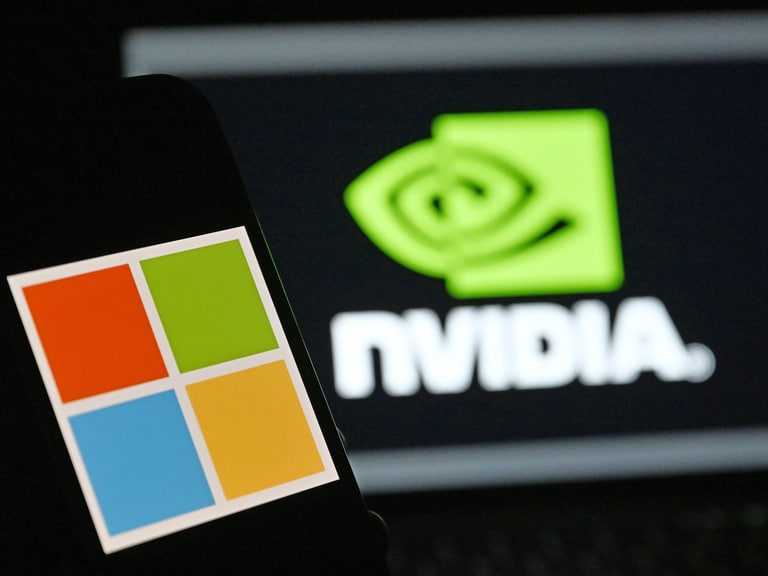Intel’s share price has fallen 5% since its recent earnings report, which painted a bleak picture of the broader chip industry’s current situation. However, analysis from McKinsey predicts the industry will grow by between 6% and 8% for the remainder of the decade.
- Samsung forecasts diminishing demand and Intel revenue is down 32%.
- A combination of legislation and new trends may provide a medium-term boost.
- The VanEck Semiconductor UCITS ETF is up 22% in 2023.
The Samsung Electronics [005930.KS] share price has made gains this year, despite the company announcing it would maintain last year’s capital expenditure (capex) levels, and warning that currently dampened chip supply wouldn’t recover until the second half of 2023.
The chipmaker also said that demand for mobile devices will likely shrink this year. On 5 January, the company reported its biggest profit drop in eight years, with operating profits down 69% for the fourth quarter (Q4) compared with the prior year.
Samsung is not alone in this. On 26 January, Intel [INTC] reported a 32% year-on-year decline in Q4 revenue and a substantial 14.5% decline in its gross margin. The company is anticipating a 40% decline in revenue for the current quarter.
Last year’s shortage of chips has quickly turned into an oversupply. However, Peter Voser, chairman of Zurich-based automation company ABB, told CNBC last month that “it’s now being sorted out”, adding that “global growth slowdown has helped on this as well, and now for the future I’m quite optimistic”.
Samsung’s share price is up 11.9% in 2023 so far, but down 13.1% over the past 12 months. Intel’s stock has risen 8.6% year-to-date, but has fallen 38.6% over the past 12 months.
Roadblocks to recovery
In the near term, things don’t look hopeful.
Daniel Kim, equity analyst at Macquarie, believes that Samsung’s decision to continue at current capex levels is “delaying price recovery”, and that the extent of the price falls could lead to a downturn that is “worse than 2008”.
The average selling price for DRAM memory chips fell 31.4% in Q3 2022, even as Micron Technologies [MU], another big player in the field, has reportedly scaled back production. Micron’s stock is up 20% year-to-date, but down 25.3% in the last year.
Elsewhere, Taiwan Semiconductor Manufacturing Co. (TSMC) [TSM] reported a 78% increase in net profit in its Q4 earnings last month. However, TSMC has provided cautious guidance for 2023, with CEO CC Wei saying he expected 2023 to be a “slight growth year” on the earnings call.
Another short-term worry for the industry is that the reopening of the Chinese economy may lead investors to favour service sectors.
Data from China is showing significant increases in flight numbers. According to Bloomberg, daily domestic air travel in China sky-rocketed from 2,600 on 29 November 2022 to 7,400 on 13 December. This boost will likely lead to an increase in demand for services and a potential fall in demand for electronic goods, leading to further headwinds for the semiconductor industry.
A trillion-dollar industry?
Notwithstanding these various headwinds, there are reasons to think the future could be rosier for the industry.
Key legislative wins could help put a floor under the industry and support long-term growth. For instance, the US CHIPS and Science Act, passed last August, aims to direct $52bn in subsidies towards US semiconductors. In December, TSMC duly announced plans to build a $40bn chip manufacturing plant in Arizona.
Further to this, analysis by McKinsey suggests that the semiconductor industry could grow by 6% to 8% per year until 2030, resulting in a $1trn industry by the end of the decade. The authors of a report titled The Semiconductor Industry believe the megatrends of AI, remote working and electric vehicles will drive this growth.
With OpenAI’s AI chatbot ChatGPT gaining 1 million users in its first five days, sparking the interest of Microsoft, further uses for semiconductors are gaining traction. Alphabet announced on Monday that it will be launching Bard, its own chatbot; the move is also likely to put pressure on demand for both memory chips and high-performance CPUs.
Funds in focus: VanEck Semiconductor UCITS ETF
The VanEck Semiconductor UCITS ETF [SMH] holds many of the biggest semiconductor companies. As of 6 February, Nvidia [NVDA] is the fund’s top holding, at 11.48% of assets under management (AUM). TSMC is the second-largest holding at 10.17% and Intel the eighth-largest at 5.99%, while Micron Technology comprises 2.79% of AUM.
The fund is up 21.6% year-to-date, but down 18.2% over the past 12 months.
Alternatively, the iShares Semiconductor ETF [SOXX] also gives investors broad and cheap exposure to the industry. As of 6 February, Nvidia is the fund’s top holding, at 9.24% of AUM. The fund also holds Micron Technology at 3.86%, Intel at 3.54% and TSMC at 3.76% of AUM.
In 2023 so far, the fund is up 20.5%, but it is down 11% over the last 12 months.
Disclaimer Past performance is not a reliable indicator of future results.
CMC Markets is an execution-only service provider. The material (whether or not it states any opinions) is for general information purposes only, and does not take into account your personal circumstances or objectives. Nothing in this material is (or should be considered to be) financial, investment or other advice on which reliance should be placed. No opinion given in the material constitutes a recommendation by CMC Markets or the author that any particular investment, security, transaction or investment strategy is suitable for any specific person.
The material has not been prepared in accordance with legal requirements designed to promote the independence of investment research. Although we are not specifically prevented from dealing before providing this material, we do not seek to take advantage of the material prior to its dissemination.
CMC Markets does not endorse or offer opinion on the trading strategies used by the author. Their trading strategies do not guarantee any return and CMC Markets shall not be held responsible for any loss that you may incur, either directly or indirectly, arising from any investment based on any information contained herein.
*Tax treatment depends on individual circumstances and can change or may differ in a jurisdiction other than the UK.
Continue reading for FREE
- Includes free newsletter updates, unsubscribe anytime. Privacy policy





